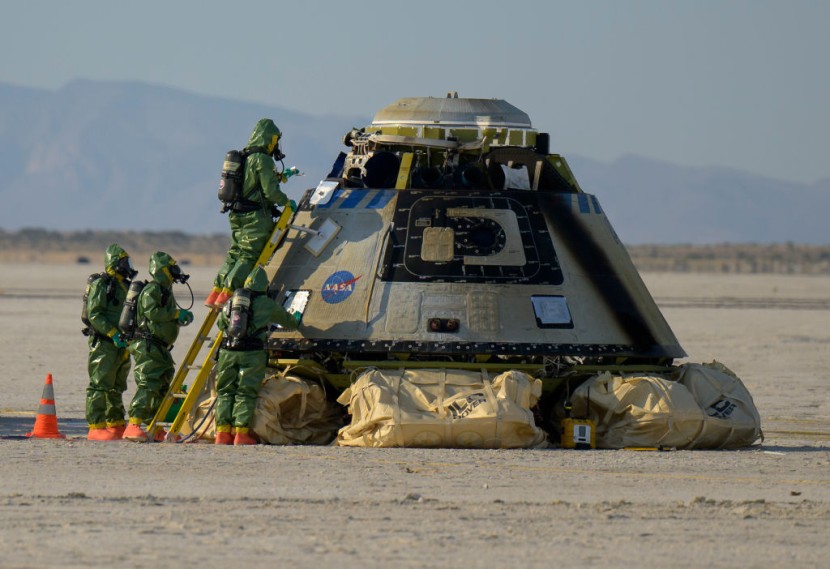
NASA and Boeing landed the CST-100 Starliner spacecraft in New Mexico on Wednesday four hours after departure from the orbiting laboratory and aim to take data of the unmanned Orbital Flight Test-2 (OFT-2) to the International Space Station (ISS).
The capsule parachuted down to Earth after finishing the mission that the space agency said was a "critical step in validating the performance of Boeing's systems." NASA added that OFT-2 brought the nation a significant step closer to having two unique human transportation systems capable of carrying astronauts to and from the space station on American soil.
Boeing's Starliner Spacecraft
Tesla CEO Elon Musk's space company, SpaceX, is already the established leader in the field of leading astronauts, and tourists, into space since 2020. In a statement, NASA Administrator Bill Nelson said that the space agency's Commercial Crew Program, in coordination with Boeing, took a major and successful step on the journey of enabling more human spaceflight missions.
The official added that the OFT-2 mission represents the power of collaboration, which allows them to innovate for the benefit of humanity and inspire the world through discovery. Belson also said that the golden era of spaceflight would not be possible without the thousands of individuals who persevered and poured their passion into the achievement, as per Fox Business.
The manager of NASA's Commercial Crew Program, Steve Stich, said in a statement that he was extremely proud of the dedication and perseverance showed by the space agency, Boeing, and ULA team that led to the Starliner spacecraft's second Orbital Flight Test.
Stitch added that throughout the process, Starline has continued to provide a tremendous amount of valuable data that the agency was reviewing to bring the spacecraft online and fully operational for crew flights to the ISS as soon as it is safe to do so.
According to Gizmodo, the six-day mission was not without its set of problems despite the Starliner's picture-perfect landing. The CST-100 spacecraft landed on Wednesday at roughly 4:49 p.m. local time at White Sands Missile Range's Space Harbor. Starliner departed the space station with more than 270 kilograms of cargo, including three spent nitrogen-oxygen reusable tanks that provided breathable air to ISS crewmembers.
NASA's Commercial Crew Program
During its landing procedure, Starliner deployed three parachutes and six airbags to help bring it to a smooth touchdown. A team was sent to transport the vehicle back to the company's facility at NASA's Kennedy Space Center in Florida for processing.
The test flight is part of Boeing's massive $4.3 billion contract with the space agency's Commercial Crew Program. The airline company has already fallen behind on delivering a viable spacecraft after two previous failed test attempts, one in 2019 and one last year.
The vice president and program manager of the Commercial Crew Program, Mark Nappi, said that they were able to conduct an excellent flight test of a complex system. He noted that by the completion of OFT-2, they will be able to incorporate lessons learned and continue to prepare for the crewed flight test and NASA certification, NASA reported.
Related Article:








